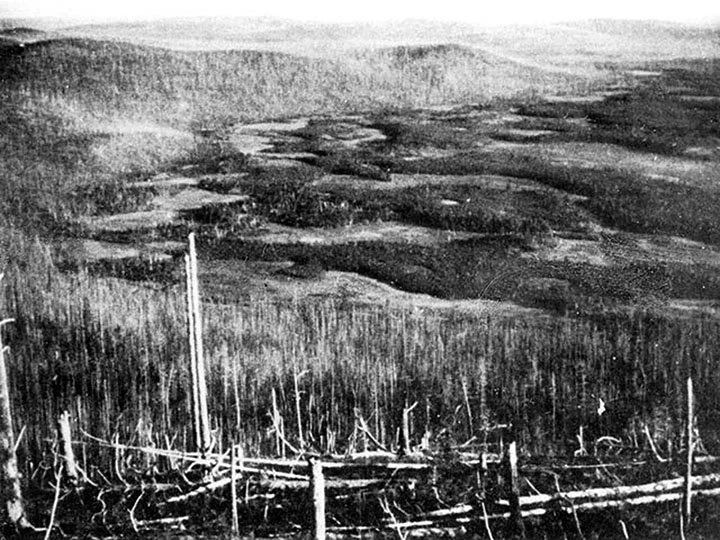Tunguska Event
Area of the Tunguska Event
Tunguska Event Aftermath
Tunguska Event Aftermath
Tunguska Event Site Today
On the morning of June 30, 1908, a massive, mysterious explosion occurred over the remote Podkamennaya Tunguska River in Siberia, Russia. The event, known as the Tunguska Event, is the largest impact event in recorded history, yet it left no impact crater. This absence of a crater has fascinated and perplexed scientists for decades, fueling countless theories.
In The Girl in the Glass, the explanation for the massive explosion differs from the widely accepted belief that a meteorite was responsible.
Eyewitnesses in the sparsely populated region reported seeing a fireball, nearly as bright as the sun, streak across the sky. This was followed by a tremendous flash and a powerful shockwave that flattened an estimated 80 million trees across 2,150 square kilometers (830 square miles). The blast was heard hundreds of miles away and recorded on seismic sensors across Europe. For several nights after, the skies over parts of Asia and Europe glowed abnormally bright, a phenomenon caused by light passing through high-altitude dust and ice particles dispersed by the explosion.
Due to the area's extreme remoteness and the political upheaval in Russia, the first scientific expedition, led by Soviet mineralogist Leonid Kulik, did not reach the site until 1927. His team found the vast, scorched devastation but, crucially, no evidence of a conventional impact crater. This discovery led to the prevailing scientific theory that the event was an "air burst"—the atmospheric explosion of a stony asteroid or comet fragment. As the object entered Earth's atmosphere at high speed, extreme heat and pressure caused it to disintegrate completely, releasing its energy in a massive aerial explosion 5 to 10 kilometers above the surface. Estimates place the energy yield between 10 and 30 megatons, thousands of times more powerful than the Hiroshima atomic bomb.



